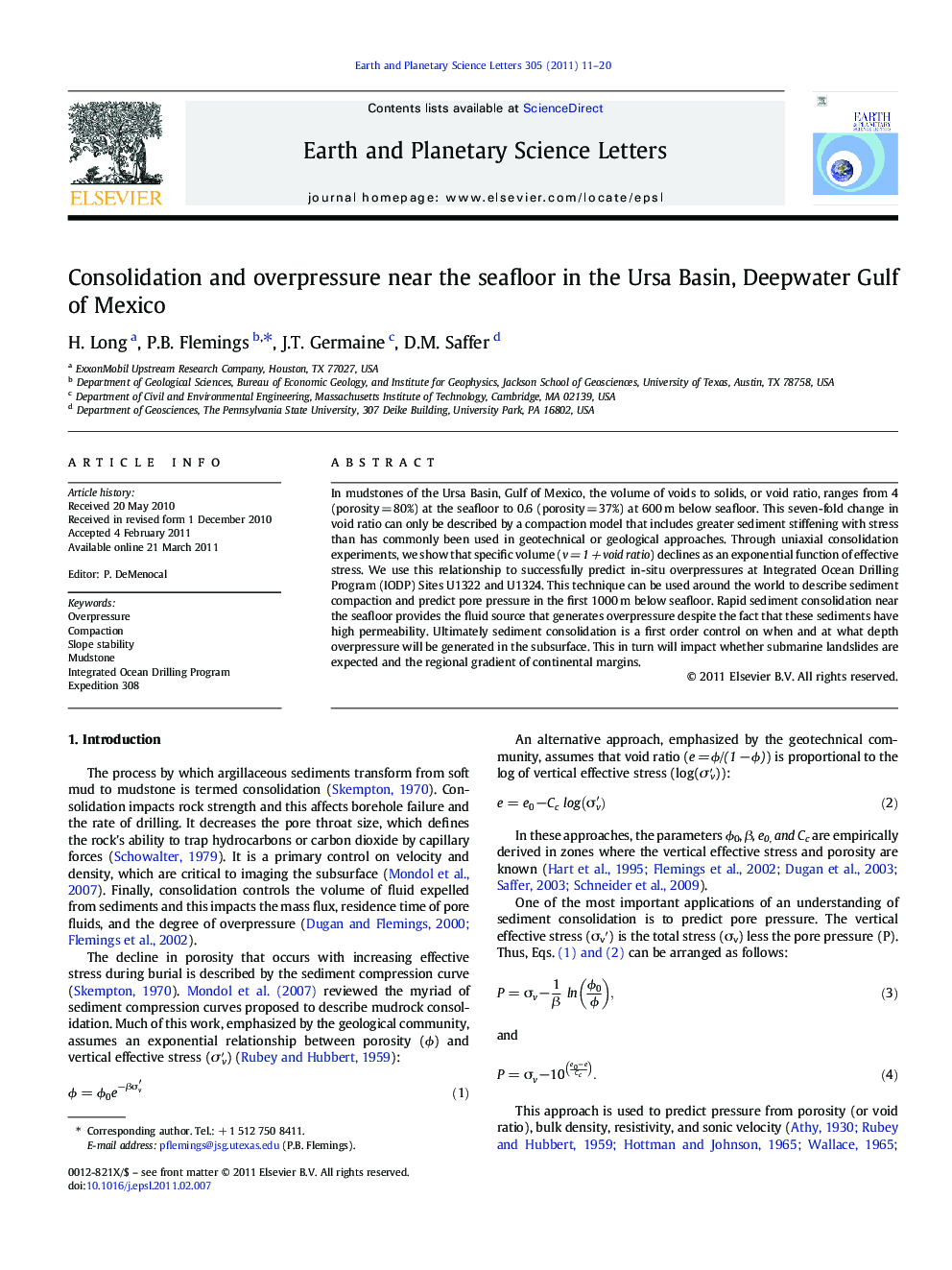| کد مقاله | کد نشریه | سال انتشار | مقاله انگلیسی | نسخه تمام متن |
|---|---|---|---|---|
| 4677947 | 1634830 | 2011 | 10 صفحه PDF | دانلود رایگان |

In mudstones of the Ursa Basin, Gulf of Mexico, the volume of voids to solids, or void ratio, ranges from 4 (porosity = 80%) at the seafloor to 0.6 (porosity = 37%) at 600 m below seafloor. This seven-fold change in void ratio can only be described by a compaction model that includes greater sediment stiffening with stress than has commonly been used in geotechnical or geological approaches. Through uniaxial consolidation experiments, we show that specific volume (v = 1 + void ratio) declines as an exponential function of effective stress. We use this relationship to successfully predict in-situ overpressures at Integrated Ocean Drilling Program (IODP) Sites U1322 and U1324. This technique can be used around the world to describe sediment compaction and predict pore pressure in the first 1000 m below seafloor. Rapid sediment consolidation near the seafloor provides the fluid source that generates overpressure despite the fact that these sediments have high permeability. Ultimately sediment consolidation is a first order control on when and at what depth overpressure will be generated in the subsurface. This in turn will impact whether submarine landslides are expected and the regional gradient of continental margins.
Research Highlights
► Specific volume declines exponentially with effective stress in Gulf of Mexico mudstones.
► This relationship is used to successfully predict pore fluid overpressure.
► The high compressibility present contributes to overpressure near the seafloor.
► Shallow overpressure controls the slope and stability of the continental margin.
Journal: Earth and Planetary Science Letters - Volume 305, Issues 1–2, 1 May 2011, Pages 11–20